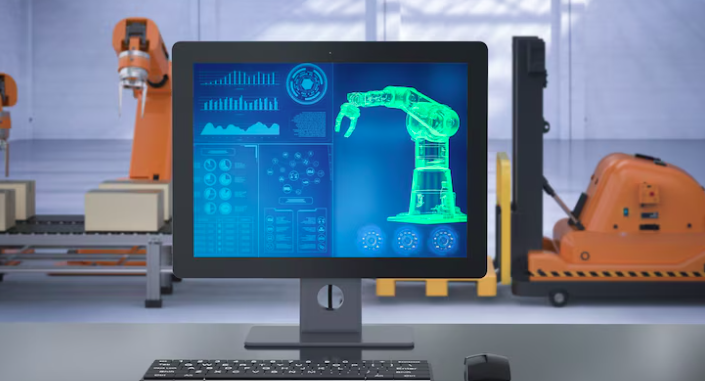In the world of modern manufacturing, speed, accuracy, and efficiency are crucial. To stay competitive, factories are turning to automation, and at the core of this revolution is industrial automation programming. This form of programming controls machines, production lines, and systems using code and smart logic.
In this comprehensive guide, we’ll explain what industrial automation programming is, the technologies involved, common programming languages, and how it boosts manufacturing performance. Whether you're a plant manager, an engineer, or a curious student, this blog has everything you need to know.
What Is Industrial Automation Programming?
Industrial automation programming involves writing code to control automated systems used in industrial environments. This includes machines, robots, conveyors, and sensors. The goal is to replace manual processes with automated ones that are safer, faster, and more consistent.
Key Components:
-
PLCs (Programmable Logic Controllers)
-
SCADA (Supervisory Control and Data Acquisition)
-
HMIs (Human-Machine Interfaces)
-
Sensors, actuators, and controllers
-
Industrial communication protocols
These systems rely on software and logic to perform tasks like starting motors, counting objects, adjusting temperatures, and much more.
Why Industrial Automation Programming Matters
The role of automation programming is expanding in every industry. Here's why:
1. Increased Efficiency
Automated systems perform repetitive tasks faster than humans.
2. Better Quality Control
Code-driven systems are precise and ensure consistent results.
3. Improved Safety
Machines take on dangerous tasks, reducing workplace injuries.
4. Real-Time Monitoring
Programs collect and display data instantly to help optimize operations.
5. Lower Operational Costs
By reducing errors and manual labor, programming helps save money.
PLC Programming: The Heart of Industrial Automation
What Is a PLC?
A Programmable Logic Controller (PLC) is a rugged computer used in industrial settings to control machinery and processes. It receives inputs from sensors, processes logic, and sends commands to devices like motors and valves.
Common PLC Brands:
-
Siemens
-
Allen-Bradley (Rockwell Automation)
-
Mitsubishi
-
Schneider Electric
PLC Programming Languages:
-
Ladder Logic: Easy to read and similar to electrical schematics
-
Function Block Diagram (FBD)
-
Structured Text (ST)
-
Instruction List (IL) (less common now)
-
Sequential Function Chart (SFC)
Example Use Case:
A PLC controls a conveyor belt. If a sensor detects an object, the PLC stops the belt, activates a robot to pick up the item, then restarts the conveyor.
SCADA Systems: Monitoring and Control from Anywhere
SCADA systems provide real-time monitoring and control of automated systems. They collect data from sensors and PLCs and display it visually for operators.
Benefits of SCADA:
-
Centralized control of multiple processes
-
Alerts and alarms for faults
-
Data logging and trend analysis
-
Remote access to factory systems
SCADA software examples include:
-
Ignition by Inductive Automation
-
Wonderware
-
GE iFIX
-
Siemens WinCC
HMI Programming: Bridging Humans and Machines
Human-Machine Interfaces (HMIs) allow operators to interact with machines through touchscreens and graphical displays. HMI programming focuses on usability and safety.
Features:
-
Graphical dashboards
-
Touch controls
-
Error alerts
-
Start/stop controls
Best Practices:
-
Keep screens simple and intuitive
-
Use color coding for safety
-
Group similar controls together
Common Programming Languages for Industrial Automation
1. Ladder Logic
Mimics electrical relay logic. Great for beginners.
2. Structured Text
Similar to high-level languages like Pascal. Good for complex math and logic.
3. Python
Used in edge devices and Industry 4.0 applications.
4. C/C++
Often used in embedded systems and robotics.
5. IEC 61131-3 Standard
Defines standard languages (like Ladder Logic, ST, FBD) for PLC programming.
Key Tools Used in Industrial Automation Programming
-
PLC Programming Software (RSLogix, TIA Portal, GX Works)
-
SCADA Platforms (Ignition, Wonderware)
-
HMI Design Tools (FactoryTalk View, WinCC)
-
Simulation Tools for testing code before deployment
-
Version control systems for code management
Where Industrial Automation Programming Is Used
1. Automotive Manufacturing
Automated welding, painting, and assembly lines
2. Pharmaceuticals
Batch processing and cleanroom controls
3. Food and Beverage
Packaging lines and temperature control
4. Energy and Utilities
SCADA systems for power plants and water treatment
5. Electronics
Precise robotic assembly and testing
Tips for Writing Effective Automation Code
-
Use Modular Code: Break programs into smaller, reusable parts.
-
Add Comments: Help others understand your logic.
-
Include Safety Logic: Add emergency stops and fault detection.
-
Test Thoroughly: Simulate real-world scenarios.
-
Use Naming Conventions: Make your code easy to read.
Challenges in Automation Programming
-
Debugging complex systems
-
Keeping up with new technologies
-
Integrating legacy systems
-
Network and cybersecurity issues
Overcoming these challenges requires continuous learning and teamwork.
Future of Industrial Automation Programming
1. Industry 4.0 and IIoT
Connected devices share data for smart decision-making.
2. AI and Predictive Maintenance
Code now includes machine learning to detect problems before they occur.
3. Edge and Cloud Computing
Run programs closer to machines or in the cloud for more flexibility.
4. Low-Code and No-Code Platforms
Simplify automation for non-programmers.
FAQs About Industrial Automation Programming
What is industrial automation programming?
It’s writing code that controls machines and processes in factories to automate tasks.
What language is used for PLC programming?
Ladder Logic is most common, but Structured Text and Function Block are also used.
Is automation programming a good career?
Yes. Demand is growing as more factories adopt smart automation.
Can I use Python in industrial automation?
Yes, especially in Industry 4.0 applications and data analytics.
What does a PLC programmer do?
They write, test, and maintain code that runs on PLCs to control machines.
Start Your Automation Journey Today
Industrial automation programming is the driving force behind modern manufacturing. It boosts productivity, ensures safety, and provides real-time control of complex systems.
Want to streamline your operations with automation programming?
Contact our automation experts today for a custom solution tailored to your business. Whether you're starting from scratch or upgrading an old system, we can help bring your factory into the future.
